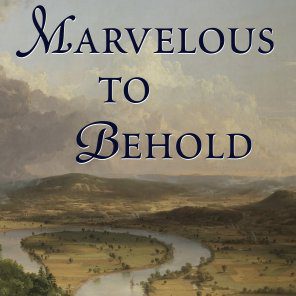What Classical Conversations’ book, “Cartography,” did for geography last year, its new book, “Marvelous to Behold,” now does for art history.
“Marvelous to Behold” provides a classical approach to art history with full-page, high-resolution images from a dozen artists representing all the major art movements from the 13th to 21st centuries. The large-format, full-color book was written by Jennifer Courtney and Courtney Sanford.
Several years ago, Jennifer Courtney wrote, “In our culture today, we are starved for beauty. It is hard to find it in our art, our architecture, our literature, our music, and sometimes even in our worship. And yet, our souls and the souls of our children hunger for it.” “Marvelous to Behold” is her answer to that hunger.
Courtney and Sanford’s approach to this book is unlike most other art history books that feature literally hundreds of artists, but don’t delve very deeply into the artist’s inspirations, techniques, etc. “Marvelous to Behold” follows Alexander Pope’s advice to “drink deep, or taste not the Pierian spring.” It features several works of art by each artist, examines their style and techniques, the social, political and cultural influences on their work, and even articles, anecdotes, and reviews written by the artists themselves or by contemporaries about the artist.
The artists examined in detail include Berlinghiero, Jan van Eyck, Michelangelo, Leonardo da Vinci, Albrecht Dürer, Johannes Vermeer, Rembrandt, Charles Willson Peale, Thomas Cole, Winslow Homer, Claude Monet and Makoto Fujimura. The text takes the reader from the Romanesque style of the 13th-century Medieval Period by Berlinghiero, to the fusion between fine art and abstract expressionism of 21st-century Japanese artist Makoto Fujimura.
Within the Classical Conversations’ curriculum, “Marvelous to Behold” will be used in both semesters of Challenge II and replaces “The Annotated Mona Lisa.” “Marvelous to Behold” will be used in conjunction with two other Challenge II resources: “How Should We Then Live,” by Francis Schaeffer, and “State of the Arts,” by Gene Edward Veith, Jr.
“The five common topics used in classical education are great tools for considering art,” Sanford writes in the new book. “They serve as a guide for looking closely at any artifact and considering what the artist may have intended to communicate through the piece.”
“Marvelous to Behold” is available for sale now ($29.99 USD) on our bookstore.
Jennifer Courtney and her husband live in Oklahoma and have classically home-educated their four children. She currently serves as the Content Development Manager for Classical Conversations MultiMedia, is a self-taught art lover, and has tutored art history in Western Cultural History for four years. She is the co-author of “Classical Christian Education Made Approachable.”
Courtney Sanford is a writer, designer and classical educator living in North Carolina. She graduated summa cum laude from North Carolina State University’s School of Design and taught art at the Bemis School of Art in Colorado. In her free time she paints Impressionist-inspired sets, and dreams of taking a long vacation in Italy to study art history.
Classical Conversations® is a classical education resource used by homeschoolers in all 50 states and 22 foreign countries. CC now has more than 117,000 students enrolled in its tutoring programs, which are provided by more than 2,500 CC communities. CC provides resources, guidance and a community for a Christian home school curriculum using classical education in three developmental stages: grammar, dialectic and rhetoric.
Leigh Bortins started Classical Conversations in 1997. The family-owned company is headquartered in Southern Pines, North Carolina.




